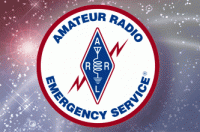|
Welcome,
Guest
|
TOPIC:
Oregon ARES® SHAKE EX 2011 12 years 3 months ago #37
|
Lessons Learned: Oregon ARES® SHAKE EX 2011 Solutions
The story of Oregon's major earthquake exercise SHAKE EX 2011 was covered in March QST, Public Service column. Here is more discussion on the lessons learned and options for solutions to some of the problems the exercise leaders experienced. On April 9, 2011, one month after the disastrous Japanese earthquake and tsunamis, Oregon ARES® volunteers conducted a statewide simulated emergency test (SET) to test their readiness to respond to just such a disaster. The SHAKE EX 2011 SET was designed to test the ability of ARES® units to exchange very high volumes of written messages between the county Emergency Managers and the Oregon Emergency Management (OEM) office in the state capitol, Salem. Much of the radio traffic exchange occurred over the Oregon ARES® Digital Network (OADN), which uses Winlink HF and VHF radio systems funded by the State of Oregon following the major windstorms of 2007. In addition to State-level, statewide communications activities, many counties held their own local drills in coordination with their local Emergency Managers, medical facilities and Community Emergency Response Teams (CERT). The local drills typically included establishment of HF radio systems at remote locations using portable Field Day-style antennas. Local drills included the transmission of photographs by radio to county and state EOCs and relaying simulated damage reports between stations. Lessons Learned During a disaster of the scale anticipated during this SET, there will likely be an overwhelming volume of emergency written and tactical traffic being exchanged between emergency managers. At such times, it is essential that the flow of messages from ARES® radio operators to and from these officials be accurate, efficient and timely. Although the technology used by ARES® units to get the message delivered worked quite well, it soon became apparent that the flood of messages being received at many EOCs simply overwhelmed anyone's ability to methodically log, manage and distribute them. Several options have been proposed to deal with this data management issue, and they are discussed below: 1. ARES operational procedures and training are needed to minimize the volume of unnecessary traffic generated by overuse of the "Reply All" option in the Winlink Airmail 3 software. While helpful in appropriate situations, such overuse dramatically slowed reception of other perhaps more important messages at some EOCs. 2. Efficiencies are also needed within the EOCs themselves to improve on the "print and stack" methods of dealing with message overload. Although the best way to handle this problem may be electronic distribution to the Served Agency Emergency Managers, solutions will likely vary between agencies. 3. There has been interest within Oregon Served Agencies of developing the ability to transmit damage assessment photo images using Amateur Radio. This SET was an opportunity to test operational procedures using Winlink HF Pactor peer-to-peer and VHF RMS connections for this purpose. SET instructions were to limit image size to about 10 Kb (240 x 180 resolution) to avoid excessive file transfer time. Pre-SET testing suggested that HF Pactor transmission time would vary from about 4 to 10 minutes depending on signal strengths or about 3 minutes by VHF Winlink packet to an RMS gateway. Four county EOCs successfully transmitted images via 40 meter Winlink Pactor peer to peer, demonstrating the feasibility of providing this service. Operators noted, however, that photo image transmission disrupted their handling of written traffic. In such cases, Emergency Managers may need to set message transmission priorities. Nevertheless, the ability of Oregon ARES units to transmit damage assessment photos, even low resolution images, has been of great interest to Oregon Emergency Managers. 4. Since existing antenna systems would likely be destroyed in a real event, the ability to set up portable, emergency powered stations "Field Day-style" would be mission critical. -- Vincent Van Der Hyde, K7VV, Oregon Section Emergency Coordinator, [email protected]; John Core, KX7YT, Oregon Section ARES® SET Coordinator, [email protected] |
|
Please Log in or Create an account to join the conversation.
Last edit: by WA1SFH.
|
Time to create page: 0.121 seconds
